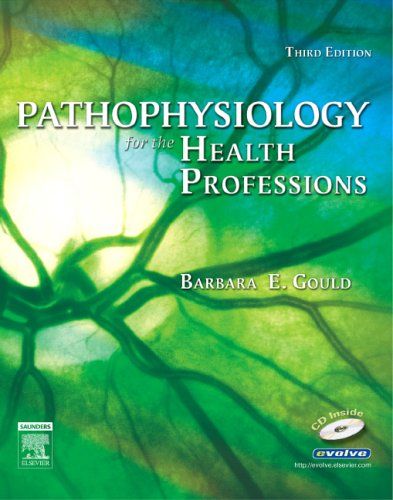Pathophysiology For The Health Professions

Genre
- CD-ROMs
- Textbook
Subject
- Allied Health Services
- Pathology
- Physiology
- Physiology--Pathological
- Textbook
Plot
Completely updated, with a new companion CD-ROM bound into the back, Pathophysiology for the Health Professions continues to present the essential concepts of disease processes. Intentionally not meant to be inclusive, this popular text focuses on major disorders and other selected disorders to provide a concise, easy-to-understand introduction to the fundamentals. Understanding this basic information enables students to apply that knowledge to other disorders that will be encountered in subsequent courses and clinical practice. Challenge questions at the end of each review section transition the student from the normal anatomy and physiology into pathophysiology. Thinkabout boxes are scattered throughout the text and include questions designed to alert students to important points that may have been missed. Emergency treatment boxes summarize emergency treatment for an acute situation. Basic diagnostic tests and treatments are included for each of the major disorders to provide awareness of the impact of certain diseases on a patient and the individualized care that may be needed. Each chapter begins with a set of learning objectives and concludes with a brief bulleted summary plus a short series of study questions. Completely updated to reflect current changes in the field. Research boxes offer students an opportunity to assess new developments in pathophysiology, recognize change, or project new possibilities. Warning Signs boxes describe warning signs of a developing condition to give students a succinct summary of conditions that they need to watch for in their patients. Companion CD-ROM with several learning activities, including: drag and drop figures, figure labeling exercises, branching logic case studies, a mini testbank of 280 questions with feedback, several learning assignments, and more. Case Studies, Thinkabouts, Challenge Questions, Emergency Treatment Boxes, and Study Questions have been enhanced and improved, with additional ones added. New photos and line drawings. New ready references in the appendices: sample medical history, disease index, and a drug index. More bulleted lists and tables (to highlight and summarize information).


 English
English  Nederlands
Nederlands  Deutsch
Deutsch  Français
Français  Español
Español  Magyar
Magyar  српски
српски  Dansk
Dansk  Italiano
Italiano  Svenska
Svenska  Slovenčina
Slovenčina  Português
Português 
